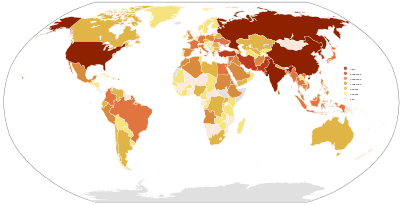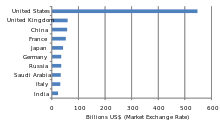Armed forces
The armed forces of a country are its government-sponsored defense, fighting forces, and organizations. They exist to further the foreign and domestic policies of their governing body and to defend that body and the nation it represents from external and internal aggressors. In broad usage, the terms "armed forces" and "military" are often treated synonymously, although in technical usage a distinction is sometimes made in which a country's armed forces may include both its military and other paramilitary forces. Armed force is the use of armed forces to achieve political objectives.
The study of the use of armed forces is called military science. Broadly speaking, this involves considering offense and defense at three "levels": strategy, operational art, and tactics. All three levels study the application of the use of force in order to achieve a desired objective.

Organization
In most countries the basis of the armed forces is the military, divided into basic military branches. However, armed forces can include other paramilitary structures.
Benefits and costs


The obvious benefit to a country in maintaining armed forces is in providing protection from foreign threats and from internal conflict. In recent decades armed forces personnel have also been used as emergency civil support roles in post-disaster situations. On the other hand, they may also harm a society by engaging in counter-productive (or merely unsuccessful) warfare. Expenditure on science and technology to develop weapons and systems sometimes produces side benefits, although some claim that greater benefits could come from targeting the money directly.[1][2]
See also
- Deterrence theory
- Mercenary
- Militaria
- Military fiat
- Military history
- Military incompetence
- Military intelligence
- Military dictatorship
- Military junta
- Military rule (disambiguation)
- Military Aid to the Civil Power
- Military Aid to the Civil Community
- Standing army
- Civil-military relations
- Armed forces of the world
- List of militaries by country
- List of militaries that recruit foreigners
- List of countries by military expenditures
- List of countries by number of military and paramilitary personnel
- List of countries without armed forces
- List of air forces
- List of armies
- List of navies